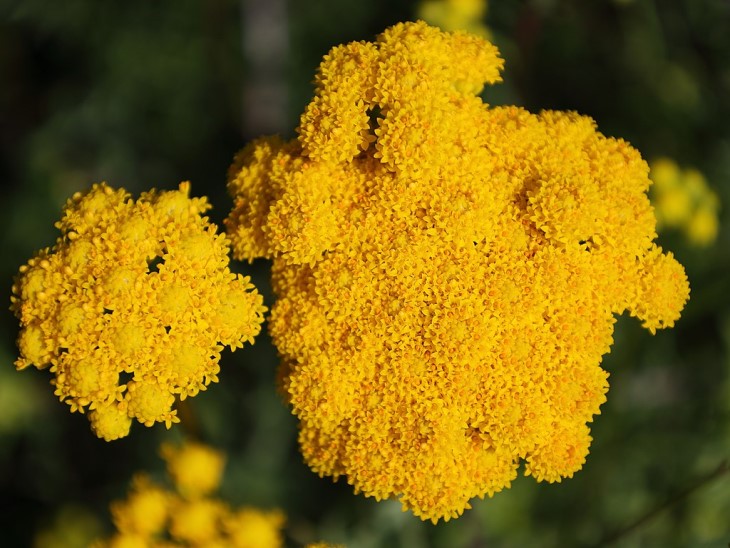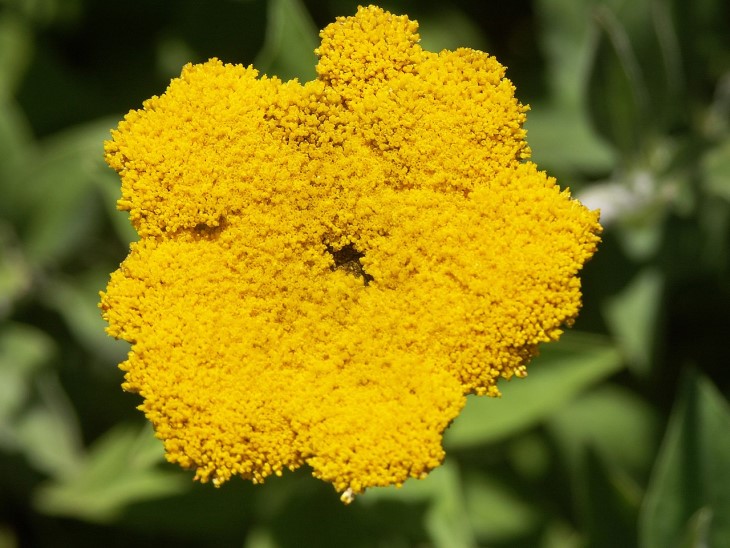
The Weizmann Institute of Science in Israel has recently made quite the fascinating discovery. There is a plant, native to South Africa and commonly referred to as "woolly umbrella" (sometimes spelled "wooly"), which produces over 40 cannabinoids, which are active substances that share characteristics with those found in the cannabis plant. What's even more surprising is that this plant has no family relation to cannabis, this plant has been found to produce cannabinoids with potential medicinal benefits. The study, published in the Nature Plants scientific journal, also revealed the process of cannabinoid production in the plant, and the possibility of creating new ones in a laboratory setting.

The woolly umbrella, scientific name Helichrysum umbraculigerum, is a plant that can be seen blooming in the greenhouses of the Weizmann Institute of Science. It is related to lettuce and everlasting flowers. One of the researchers, Dr. Shirley (Paula) Berman, said that they discovered a new source of cannabinoids and developed tools to produce them in the lab. Although the cannabis plant still holds the record for having more than 100 cannabinoids, the woolly umbrella has over 40 cannabinoids, most of which were completely unknown until now.
The laboratory of Prof. Aharoni delved into the roots of Helichrysum umbraculigerum, commonly known as the woolly umbrella, due to the medical potential of cannabinoids. The plant has been used by South African tribes in healing ceremonies and rituals by burning it, suggesting its psychoactive effects. Although German scientists found evidence of cannabinoids in the plant over 40 years ago, recent studies have not yet replicated these findings. Cannabinoids have already been widely used to alleviate pain, anxiety, nausea, and epileptic attacks, with their medical indications increasing with time.

Dr. Berman and her colleagues have confirmed previous findings about the woolly umbrella plant's ability to produce cannabinoids. The team used various cutting-edge technologies like high-resolution mass spectroscopy and nuclear magnetic resonance to identify and reveal the structure of over ten cannabinoids. They also uncovered the plant's biochemical pathway for cannabinoid production and its production location. The discovery is significant as it shows the importance of cannabinoids in ecology as two genetically unrelated plants evolved to produce them, according to Professor Aharoni. This proves cannabinoids may play an even more significant role than we previously thought.
The woolly umbrella and cannabis plants differ in the location where they produce cannabinoids. While cannabis produces these substances in its short-lived flowers, the woolly umbrella mainly produces them in its perennial leaves. This difference may give the woolly umbrella an economic advantage over cannabis. However, both plants share similarities in the production process of cannabinoids. Scientists found that the enzymes involved in the production of cannabinoids in both plants belong to the same families, at least in the first half of the production process.
The woolly umbrella plant contains six cannabinoids that are also present in cannabis, but without THC and CBD. Instead, it contains CBG, a promising cannabinoid with medicinal potential, especially as a treatment for neurological disorders and colon cancer, among others. It also has no psychoactive effects. The plant also contains a high concentration of the acid version of CBG, which is a starting material for classical cannabinoids. Although the purpose of cannabinoids in plants is unknown, it is hypothesized that they protect them from environmental hazards. Further research is needed to understand their ecological roles.

The researchers aimed to refine their understanding of the cannabinoid's production process, by attempting to produce them artificially in the lab. To do so, they used new enzymes, which were first produced in tobacco leaves, to create cannabinoids within yeast cells. This successful demonstration of production capabilities highlights a new way to produce cannabinoids for research and practical purposes. Additionally, this method could be used in the future to engineer new cannabinoids with medicinal properties that do not exist in nature. Furthermore, the discovery of new cannabinoids could lead to new possibilities in healthcare. Dr. Berman shares that the next step will be to investigate the properties of the 30+ new cannabinoids discovered in the plant and explore their potential for medical use.
You can read more about this on the Weizmann Institute website.